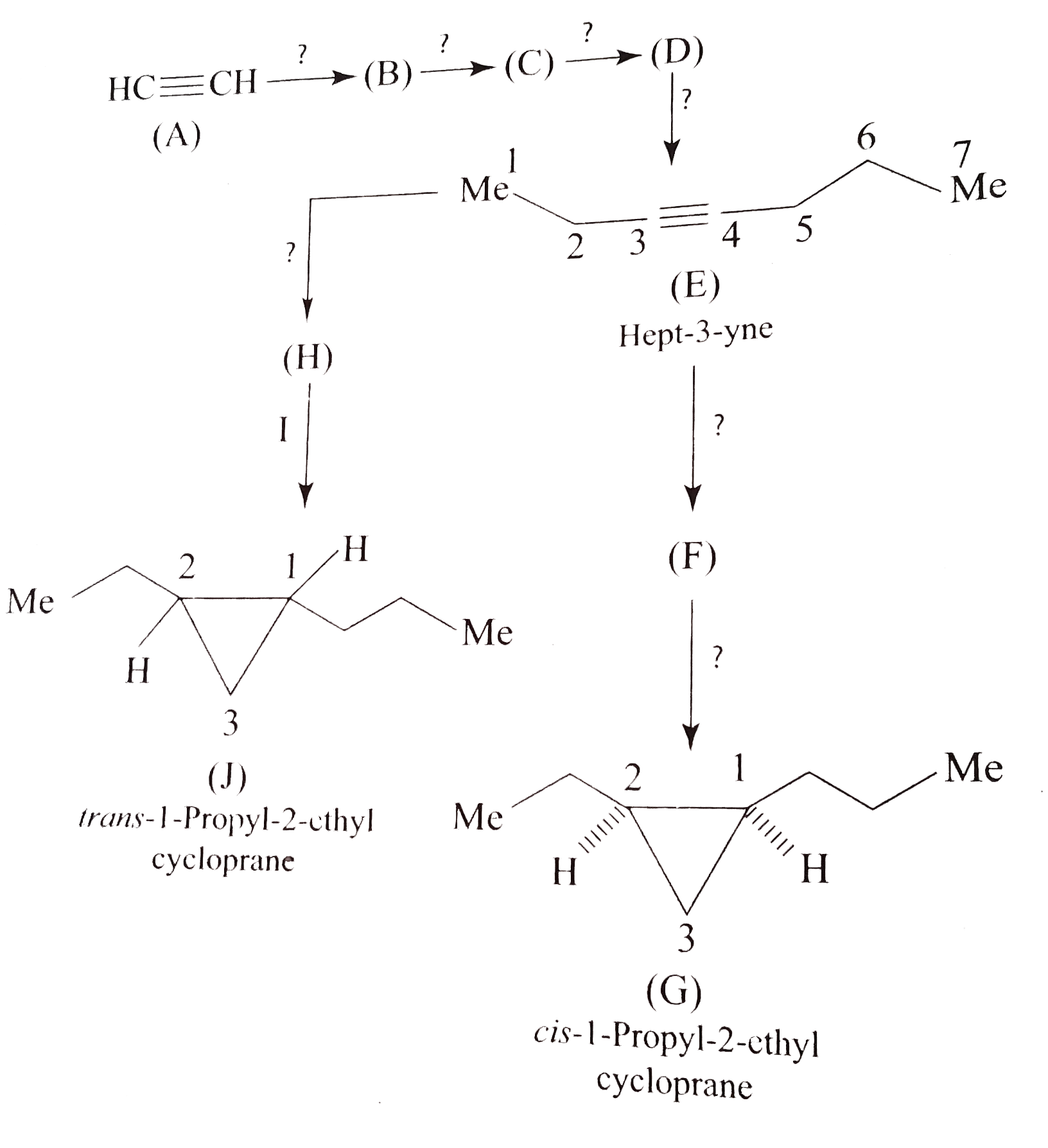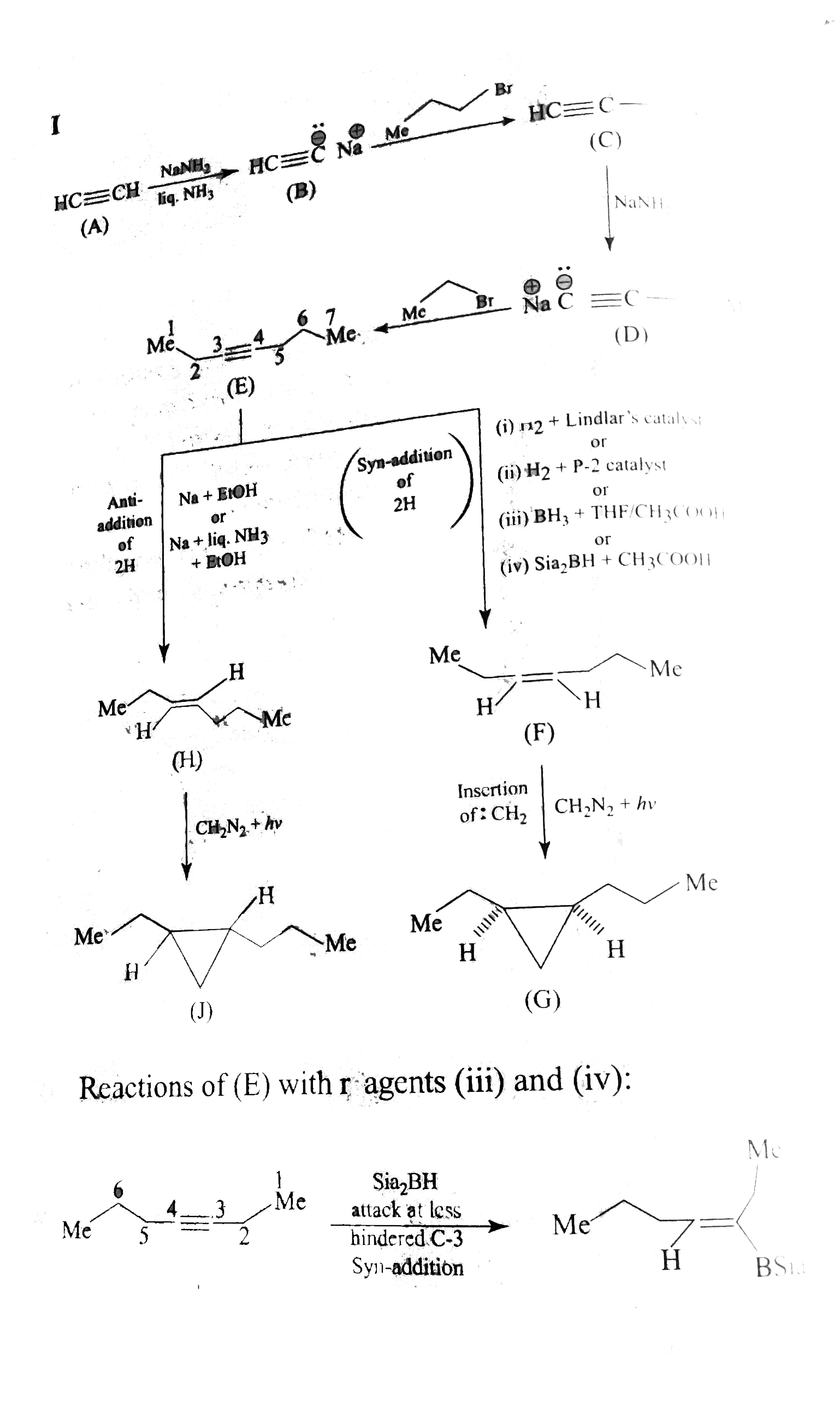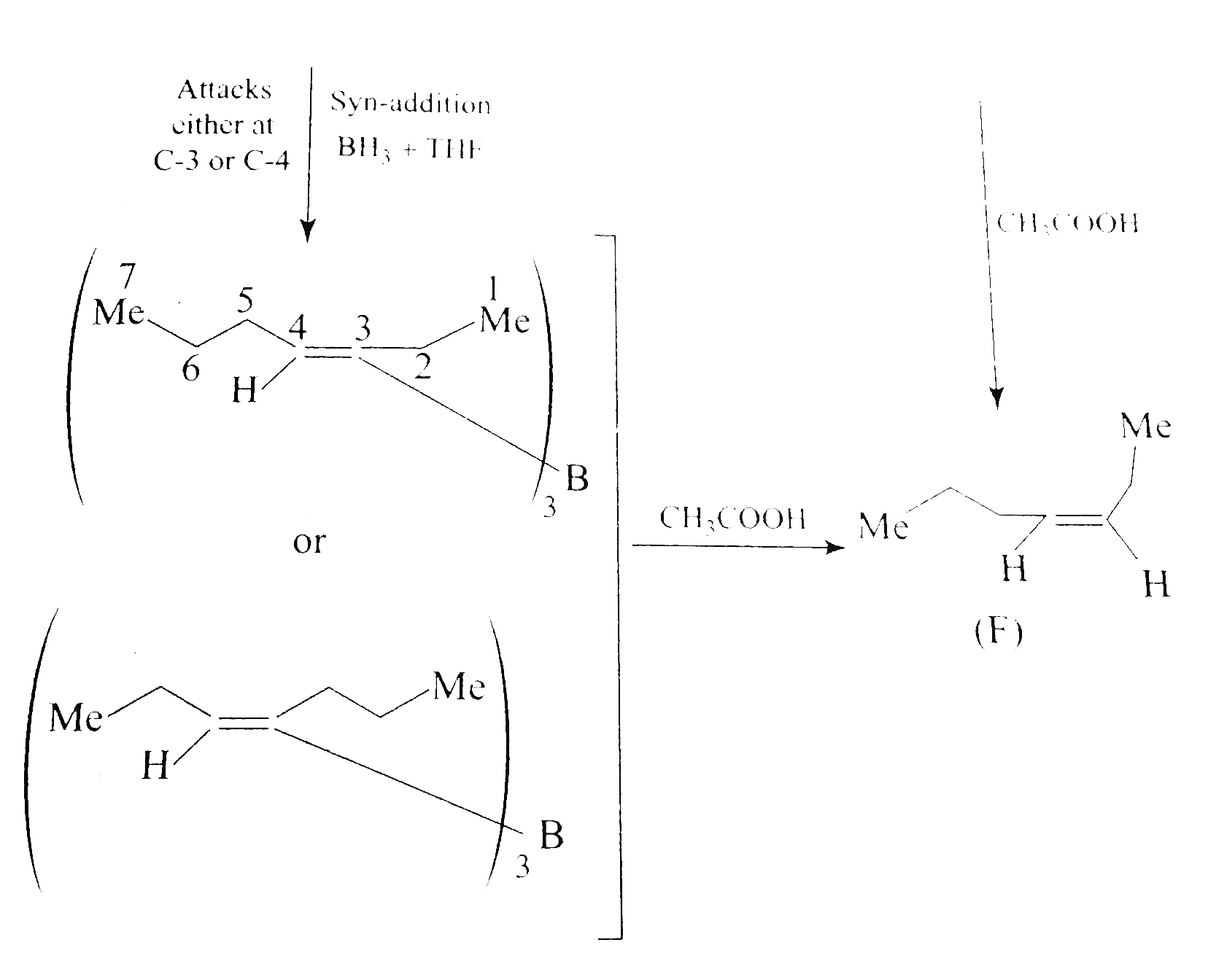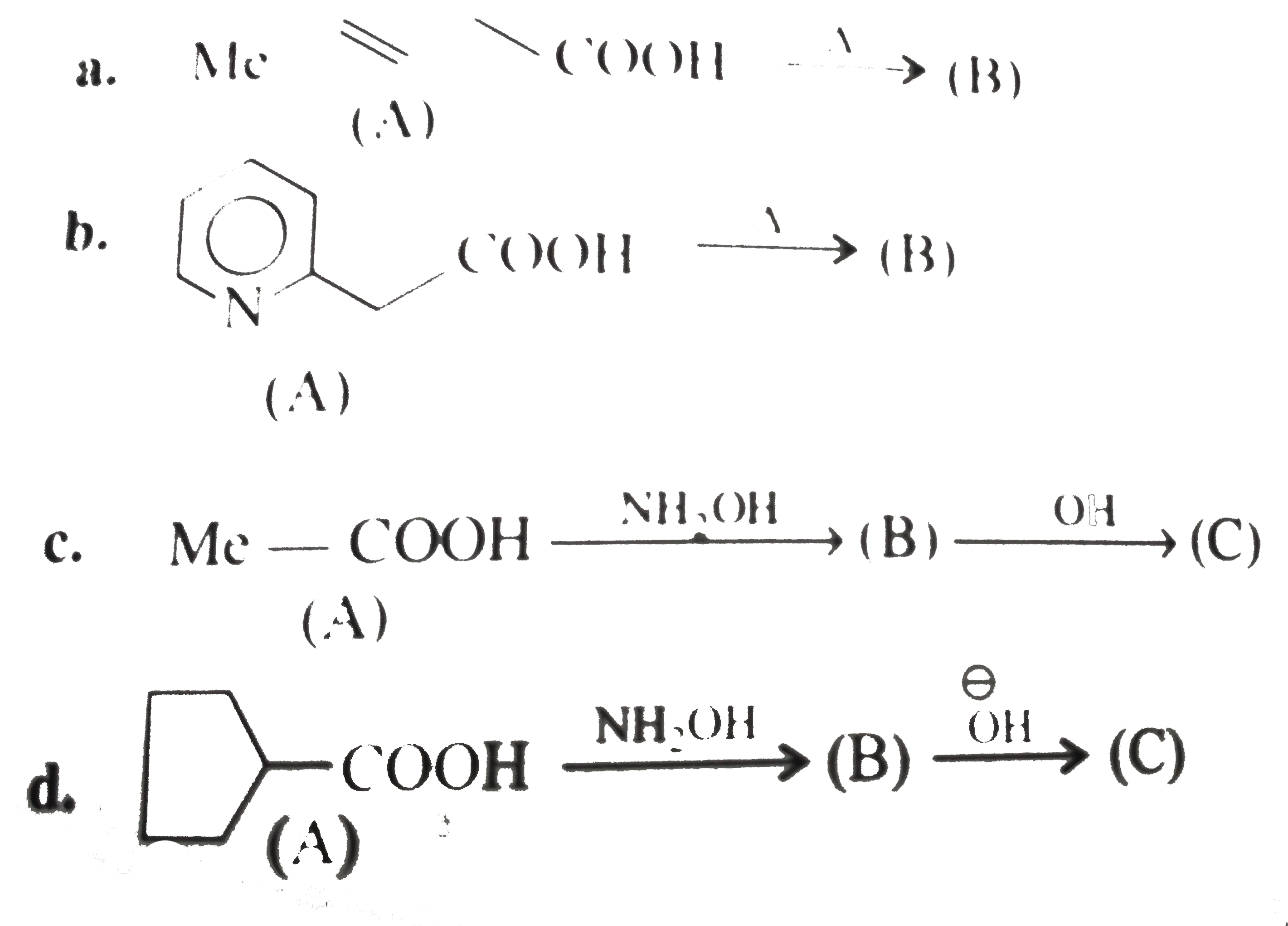Complete the following reactions:

The compounds (E) to (F) can be obtained by four different reagents. Give the names of the reagents.
Text Solution
i. Preparation of (E) from (A): Introduction of two different groups (Et- and Pr-groups) is required in (A), which can be obtained by reacting A with and their reaction with and again with and .
ii. Preparation of (G) from (E), Introduction of cyclopropyl ring can be achieved by carbene insertion to alkene. Therefore, the sequence should be:
iii. Preparation of (J) from (E), It can be obtained by the same sequence as in (ii), but from trans-alkene. Therefore, the sequence should be:
Reactions:

Reactions of (E) with reagents (iii) and (iv):

|
Topper's Solved these Questions
- ALKYNESBOOK - CENGAGE CHEMISTRY ENGLISHCHAPTER - ALKYNESEXERCISE - Solved Examples
24 Videos
- ALKYNESBOOK - CENGAGE CHEMISTRY ENGLISHCHAPTER - ALKYNESEXERCISE - Exercises (Subjective Type)
31 Videos
- ALKENES AND ALKADIENESBOOK - CENGAGE CHEMISTRY ENGLISHCHAPTER - ALKENES AND ALKADIENESEXERCISE - Single correct Answer
14 Videos
- APPENDIX - INORGANIC VOLUME 1BOOK - CENGAGE CHEMISTRY ENGLISHCHAPTER - APPENDIX - INORGANIC VOLUME 1EXERCISE - chapter-7 Single correct answer
1 Videos
Similar Questions
Knowledge Check
Let →C=→A+→B then :
A∣∣→C∣∣ is always greater then ∣∣→A∣∣ and ∣∣→C∣∣<∣∣→B∣∣Bit is possible to haveC∣∣→C∣∣ is always equal to ∣∣→A+→B∣∣D∣∣→C∣∣ is never equal to ∣∣→A+→B∣∣CH3OHPI3−−→(A)KCN−−→(B)Hydrolysis−−−−−→(C).
The compound (C) is :ACH3OHBHCOOHCCH3CHODCH3COOH2HC≡ChCu2++O2−−−−−−→(A)1mol−−→HCl(B)
Compound (A) and (B) are:A B
B C
C D
D
Convert the following:
 ?−−→(B)?−−→(C)?−−→(D)Hept-2-yne(E)
?−−→(B)?−−→(C)?−−→(D)Hept-2-yne(E)
1-Bromopropane (A)
View Solution2HC≡ChCu2++O2−−−−−−→(A)1mol−−→HCl(B)
Compound (A) and (B) are:
View SolutionComplete the following reactions :
(a)
(b)
( c) Me−COOH(A)NH2OH−−−−→(B)ΘOH−−→(C)
(d)
( e) .
.
View SolutionSOCl2−−−→(A)KCN−−→(B)H+−−→(C ), the compound (C ) is

View SolutionSOCl2−−−→(A)KCN−−→(B)H+−−→(C ), the compound (C ) is

View Solution
